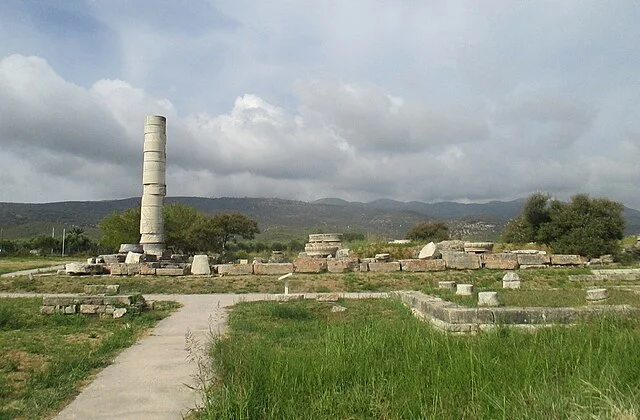The Heraion of Samos was one of the most important sanctuaries in ancient Greece. Located on the island of Samos, this temple was dedicated to Hera, the wife of Zeus. Archaeological evidence suggests that the site was used as early as the 8th century BC.
Get your dose of History via Email
Architectural Development
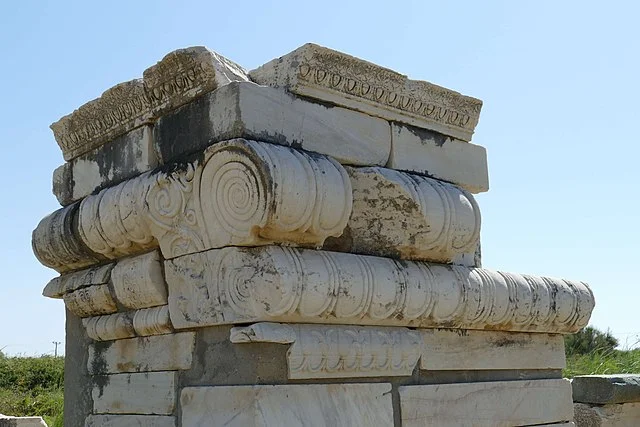
The sanctuary underwent several phases of construction. The first temple, built around 800 BC, was a modest structure made of wood. Over time, it was replaced with more elaborate buildings. By the 6th century BC, under the rule of the tyrant Polycrates, the sanctuary had become one of the largest in the Greek world. A monumental temple, known as the “Hekatompedos,” was constructed during this period. Measuring 100 feet long, it showcased the architectural skills of early Greek builders.
The temple was further expanded in the 6th century BC by the architect Rhoikos. However, this version of the temple was destroyed by an earthquake. Around 530 BC, it was rebuilt by the architect Theodoros. The final temple was considered a masterpiece of the Ionic order, with massive columns and intricate details.
Religious Significance
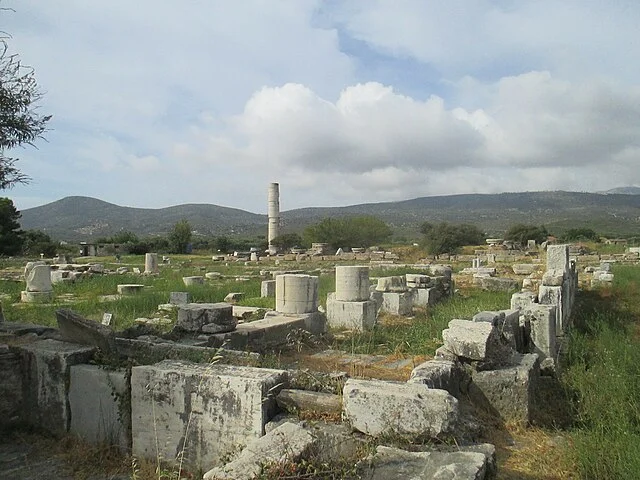
The Heraion served as a major religious center for the worship of Hera, the goddess of marriage and family. Pilgrims from across the Greek world visited the site to offer sacrifices and gifts. The sanctuary was also associated with the Samian Hera, a local variant of the goddess, emphasizing her role in protecting the island and its people.
The sanctuary was known for its unique offerings, including large numbers of terracotta figures, jewelry, and metalwork. These items were often dedicated by wealthy individuals and rulers, reflecting the importance of the site in the ancient Greek world.
Historical Importance
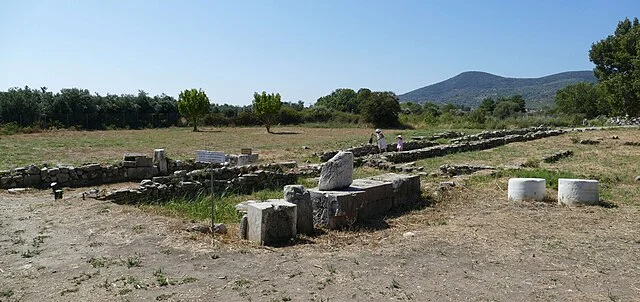
The Heraion of Samos played a significant role in the political and cultural life of the island. It was closely connected to the city of Samos, and its rulers often used the sanctuary to display their wealth and power. Polycrates, for example, was a major benefactor of the temple, commissioning extensive building projects and dedicating numerous offerings.
In addition to its religious role, the Heraion was a center of artistic and architectural innovation. The temple’s design influenced other sanctuaries across the Greek world, particularly in the use of large columns and the development of the Ionic order.
Decline and Rediscovery
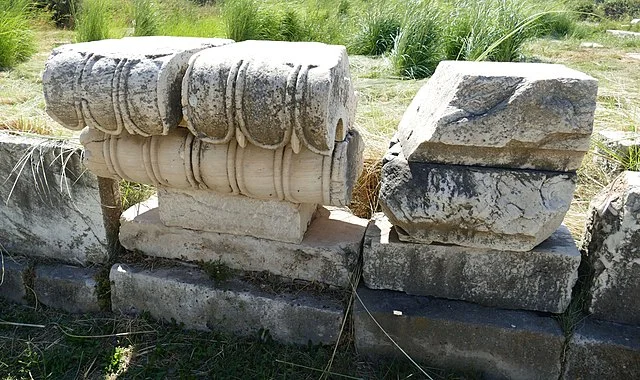
The decline of the Heraion began in the Hellenistic period, as Samos lost its political influence. By the Roman era, the sanctuary had fallen into disrepair. However, it remained a place of pilgrimage until the early Christian period, when many pagan temples were abandoned or destroyed.
Modern interest in the Heraion began in the 19th century, with archaeological excavations uncovering the remains of the temple and its surrounding structures. Today, the site is a UNESCO World Heritage Site and a major tourist attraction, offering valuable insights into ancient Greek religion, art, and architecture.
Source:

